The definitive guide to traveling with wine in 2024, with tips from our experts
- Oops!Something went wrong.Please try again later.
Content is created by CNN Underscored’s team of editors who work independently from the CNN newsroom. When you buy through links on our site, CNN and its syndication partners may earn a commission. Learn more
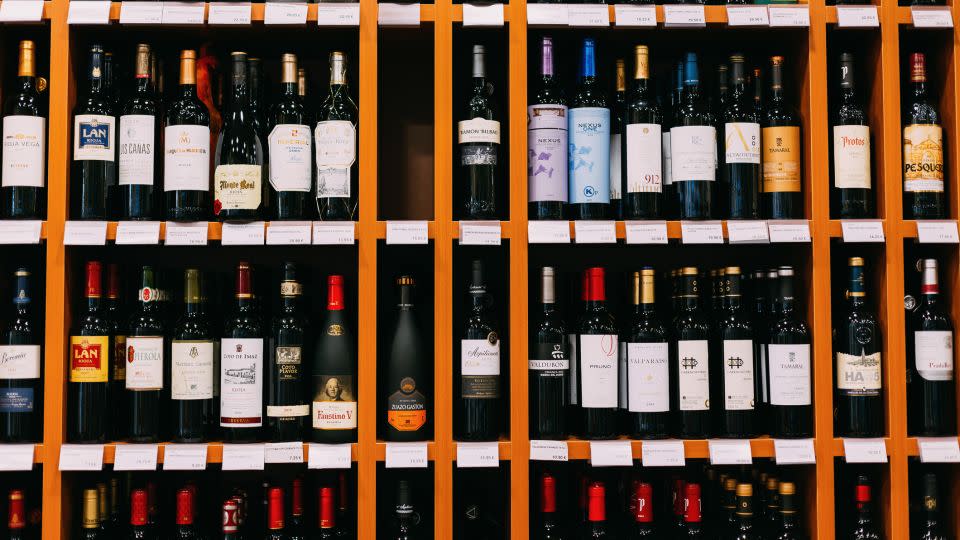
Traveling with wine bottles in your luggage can be a gamble. A gorgeous vino makes for a wonderful souvenir or gift, but the risk of breakage in transit is real.
After a recent trip to Spain, I learned the hard way that wrapping wine bottles in T-shirts was not a foolproof technique. Not only did my beautiful Rioja Gran Reserva — a parting gift from the sumptuous Circulo Gran Via Hotel in Madrid — fail to survive the flight, but my white dress shirts looked like they had been tie-dyed in Barney’s favorite color.
Packing wine correctly also protects against bottle shock, the flavor deterioration wines suffer from trauma and fluctuations in temperature and air pressure.
“Fine wines, champagnes in particular, often go into shock after a bumpy journey — the reason why so many people are disappointed when drinking wine they’ve tasted abroad when they then taste it at home,” says Jennifer Hugé, the beverage director at FYN, a Relais & Chateaux-awarded restaurant in Cape Town, South Africa. “Wine lets you bring home a taste of places you’ve visited — liquid memories to share at a later date with loved ones,” says Hugé. “However, bottle shock can ruin wine.”
Thankfully, we have tools and tips to get your precious bottles back home safely and with flavors and structure undiminished. Below, we have rounded up a few pearls of wisdom and products for wayfaring wine fans.
Rest wines after a journey

Wines, like people, need time to recuperate after an arduous journey. In addition to the inevitable bumps and jostles of travel, the pressure and temperature changes of air travel wreak havoc on wine’s flavor and structure. “Wine is very sensitive to its environment. You should always leave the wine you fly with lying down for a little while before opening and enjoying,” explains Hugé.
If you can resist the temptation to uncork upon arriving home, let wine rest for at least a day. After returning home laden with wine, I transfer bottles immediately from my suitcase to my SASIDO countertop wine rack, resting them horizontally for a day or two.
Sasido Countertop Wine Rack
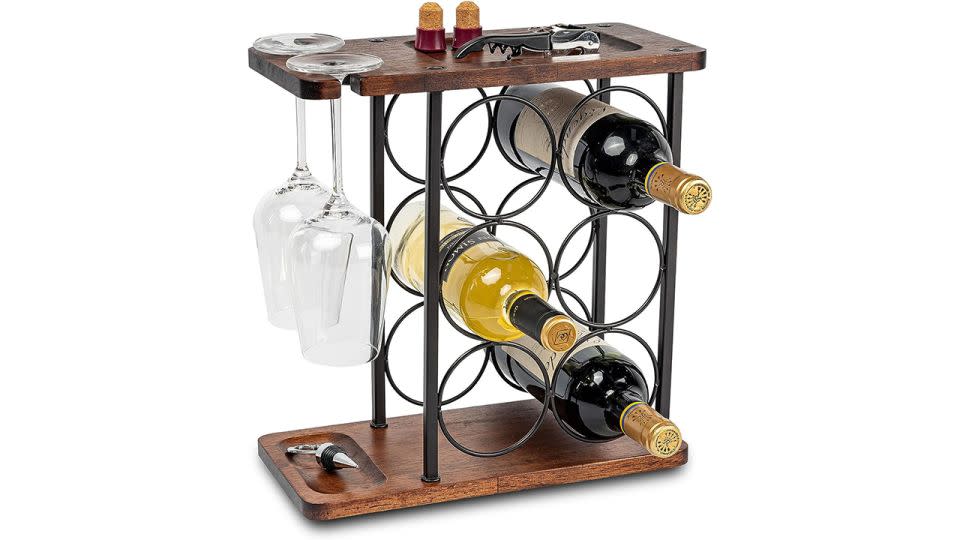
This countertop wine rack can hold six bottles, two glasses and a number of accessories. Plus, it looks good with its stained wood finish and metal accents.
Put bottles in a wine sleeve
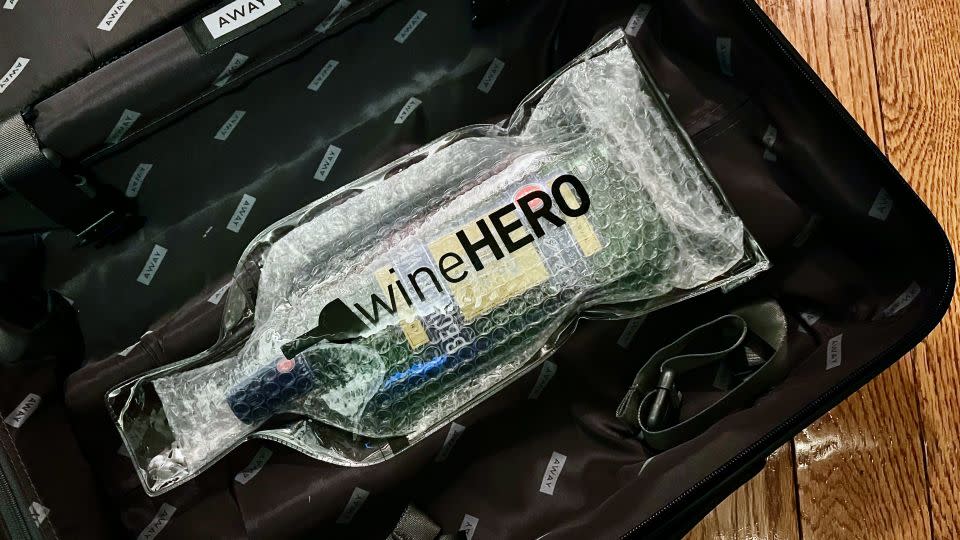
Wine sleeves offer a cost-effective solution for travelers transporting wine. These sleeves provide a protective layer of plastic or silicone around bottles, minimizing the chances of breakage or bottle shock during transit. When empty, wine sleeves occupy minimal space in your luggage, making them a practical and convenient choice for travelers.
WineHero Bottle Protector Bags, 6-Pack
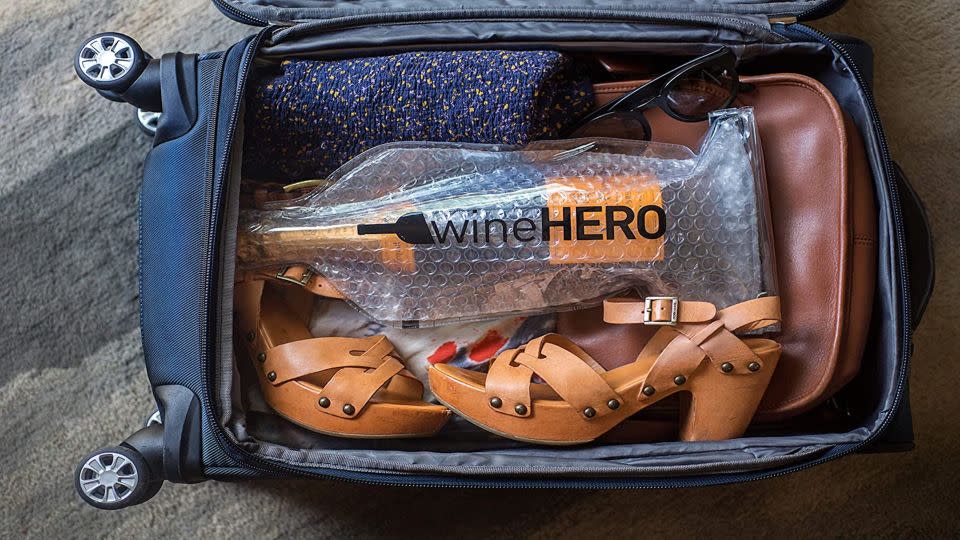
These are a must-have for wine, beer and spirit enthusiasts who travel. Each reusable bag protects your bottles from bumps and falls as your checked bag moves through the airport. Plus, each bag seals, keeping your clothes dry on the off chance a bottle breaks in transit.
Invest in a wine-friendly suitcase
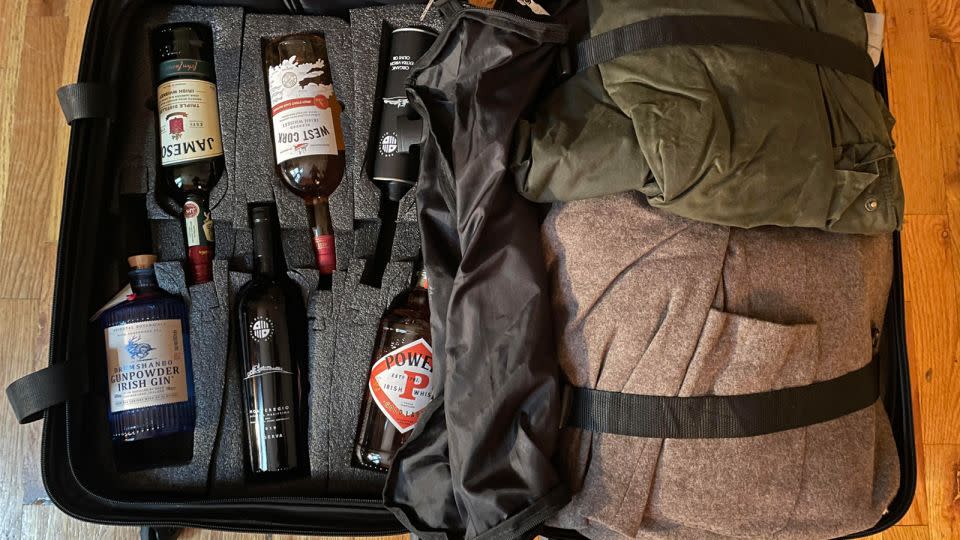
For the committed gourmet traveler, specialized suitcases for carrying wine are a worthy investment. With cushioned slots conforming to the shape of wine bottles, a wine suitcase is like a seat in first class for your precious vino. If you’re bringing home an expensive bottle and want to take every precaution against bottle shock and breakage, consider luggage from VinGardeValise.
The suitcase holds up to 12 bottles, and the lining guards against both trauma and temperature fluctuations. Importantly, VinGardeValise suitcases have secure locks, so you can also rest easy that nobody will tamper with your bottled treasures.
If you’re not ready to spend hundreds of dollars on a suitcase designed solely for wine, the Monos Hybrid Trunk is traditional luggage well suited for transporting bottles. The suitcase’s deep containers allow for wine bottles to stay safely cushioned, especially when layered with garments or bubble wrap.
VinGardeValise Grande
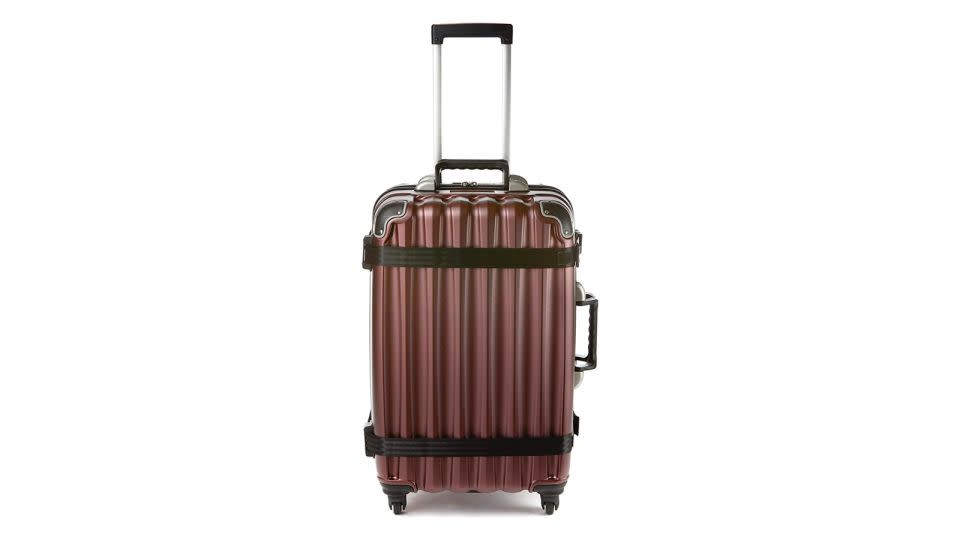
This checked suitcase is a must-have for those who like to bring wine or spirits home from vacation. It’s specifically designed for carrying bottles and protecting them in the process. We found it incredibly packable, and it kept our bottles safe during a transatlantic flight.
Monos Hybrid Trunk
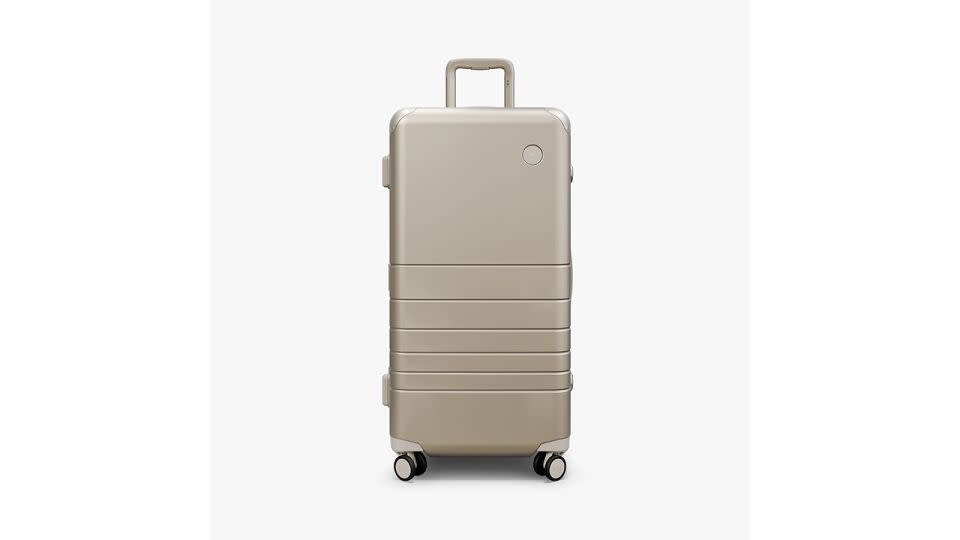
This large, trunk-style suitcase can fit (properly packed) wine bottles or whatever else you need to bring with you. It has a sturdy aluminum frame and anodized corner guards that will protect your wine as you move about the world.
Bubble wrap is your friend
Bubble wrap is much more effective for protecting bottles than T-shirts. Plus, it also comes in handy for bottles with a one-off shape incompatible with wine sleeves.
Hugé brings a small roll of bubble wrap in her suitcase whenever she travels, but you can also procure bubble wrap at most airport duty-free stores. Styrofoam containers work fine too, but these hog more space in your suitcase.
Scotch Cushion Wrap
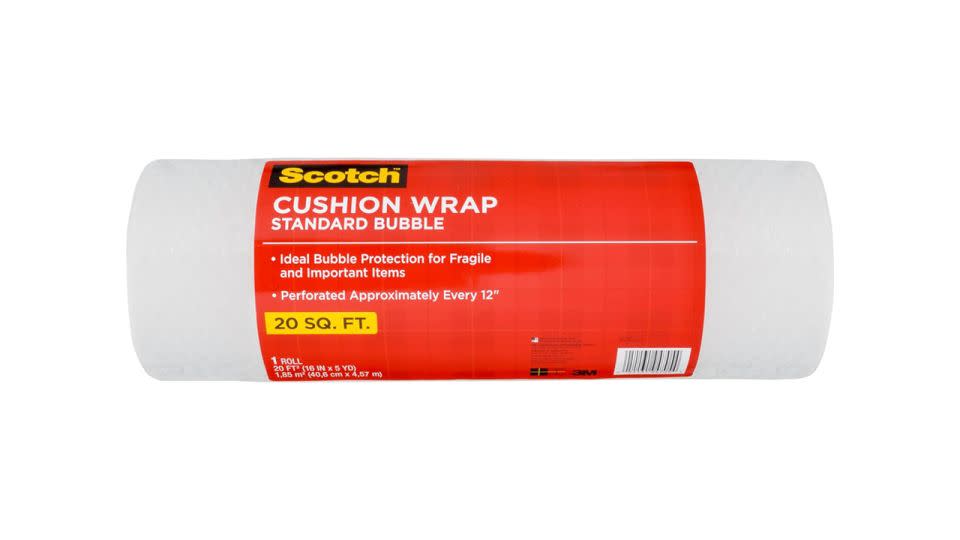
Consider bringing this inexpensive bubble wrap with you if you plan to bring wine back from your next trip. It could save you money when compared to buying bubble wrap at your destination.
Choose strudy, small bottles with screwtops
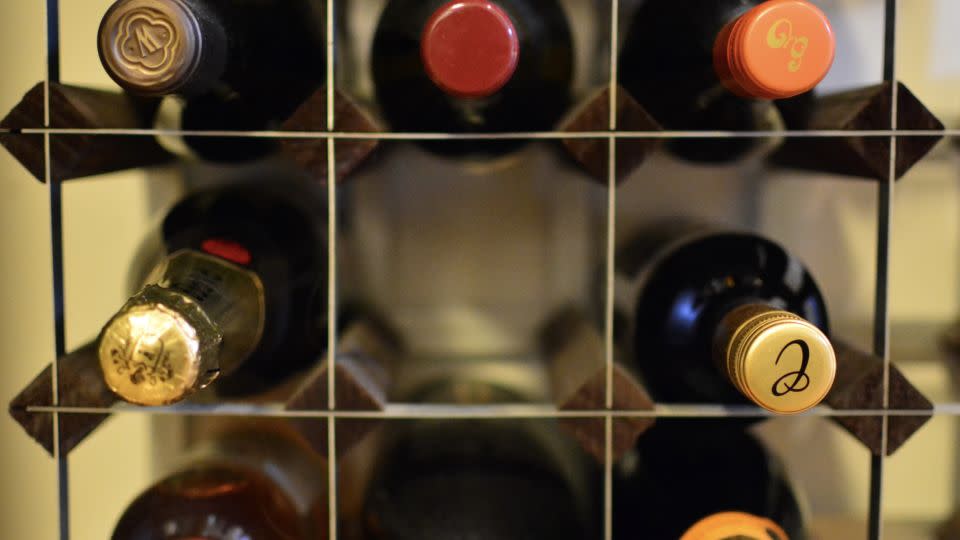
Wine bottles come in a variety of shapes, with some better suited for traveling. Hugé recommends Rieslings, a varietal traditionally sold in tapering bottles with reinforced necks, as the most travel-hardy wine. Bottles with long, unreinforced necks — the bottle shape most typical of American wines — are the most delicate travelers.
Smaller, more compact bottles also reduce breakage risk. “There’s something to be said about half or demi-bottles, which take up less space. These bottles are generally sturdier and, as a bonus, allow you to take home a greater variety,” says Hugé. Bottles with screwcaps, notes Hugé, are also better travelers than corked bottles, which are more temperamental with the pressure changes of air travel.
Know local laws and limitations
Avoid the heartbreak of getting your bottles confiscated by customs officials, and make sure to read up on how many bottles the country you’re visiting permits you to take home.
For example, Japan is notorious for stringent limitations on bottle quantity. “Speaking from personal experience, you don’t want to get caught leaving Japan with too many bottles of, say, sake or whiskey,” says Hugé with the rueful tone of a woman who has endured customs office tragedy.
Decant wine after uncorking
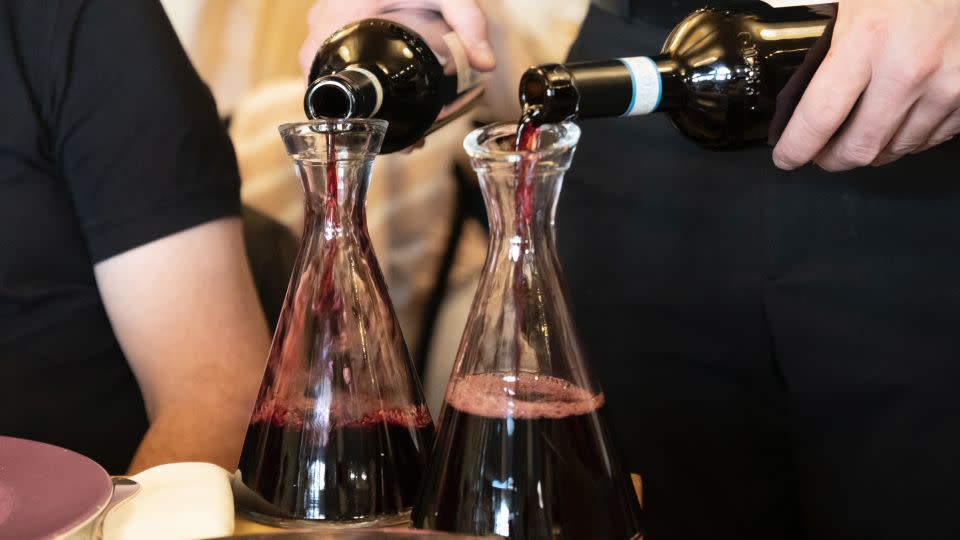
Taking the time to decant a wine can undo some of the damage of bottle shock. Decanting oxygenates wine, allowing the flavors to open up to the fullest extent. Aged reds, especially, should almost always be decanted for an hour or two before sipping, even when they have not traveled recently.
The Le Chateau, a decanter with a bulbous reservoir crafted from thick glass, is a functional work of art, an accessory that looks beautiful on your countertop even when empty.
Le Chateau Red Wine Decanter
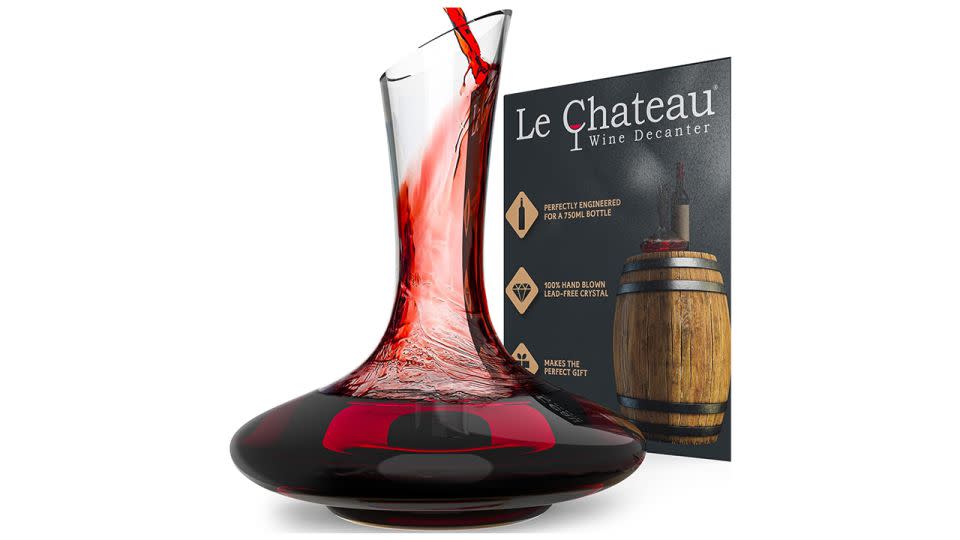
This handblown wine decanter is designed to provide your wine with maximum aeration and can fit a standard 750-milliliter bottle. It’s a great way to enhance your wine-tasting experience, whether you bought a bottle abroad or at your local liquor store.
In a pinch, wrap bottles in T-shirts in the center of your luggage
Sometimes you don’t have time to find bubble wrap, and you have to cowboy it. If you can’t procure bubble wrap or styrofoam casing, use the ad-hoc method of wrapping wine bottles in clothing.
When I have had to resort to this strategy, I make sure to wind the garments as tightly as possible around the bottles, reinforcing the wrap with rubber bands. Place the wine bottles in the middle of your suitcase, where bumps and jostles will not traumatize the bottles as severely.
But again, you should only do this as an absolute last resort. A broken bottle could — as I’ve learned — break in your bag and destroy your travel wardrobe in the process.
Looking for a travel credit card? Find out which cards CNN Underscored Money chose as the best travel credit cards currently available.
Note: The prices above reflect the retailers' listed price at the time of publication.
For more CNN news and newsletters create an account at CNN.com

